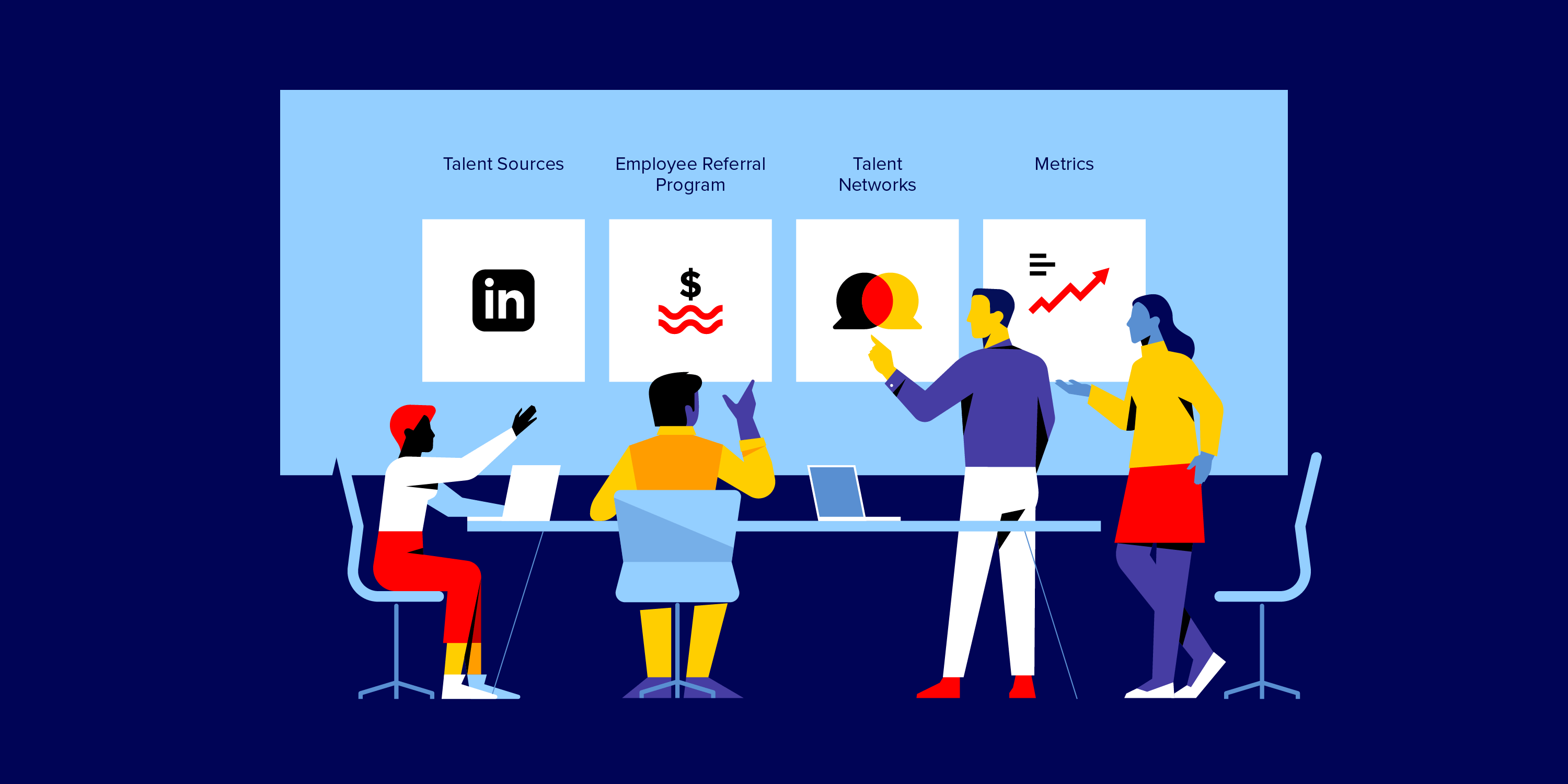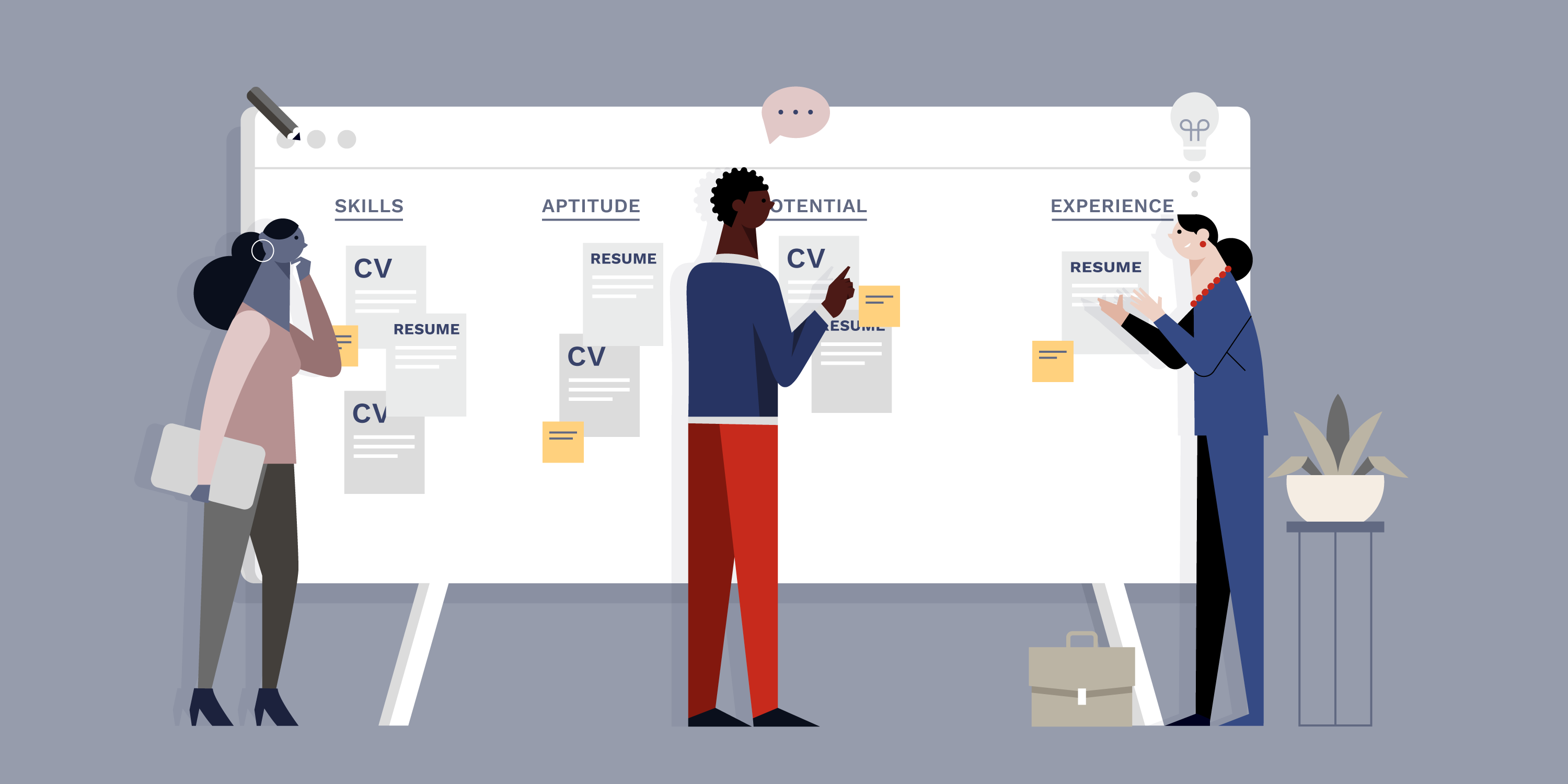8 Tips for Finding the Right Candidates—Fast

Alina Dizik’s business articles have appeared in The Wall Street Journal, Money, and Time. Her expertise spans technology, recruiting, and the future of work.
From deploying talent networks to tweaking job descriptions, top talent acquisition execs share how to speed up hiring without sacrificing quality.
Finding—and hiring—high-quality talent takes time. Especially if the role is in a competitive job market or includes “the need for highly technical, analytics, and niche skill sets,” says Kathie Patterson, Chief Human Resources Officer at Ally Financial, a Detroit-based Fortune 500 digital financial services company. But taking too long to fill an open position has repercussions, including a lag in the completion of critical work and investing too many resources in securing each hire. Many organizations also run the risk of attrition when burned-out employees are forced to cover the work of unfilled roles for weeks or months at a time.
Here, top recruiters share strategies for finding the right candidate more quickly—without sacrificing quality for speed.
Revamp Referrals
Strong referral programs go a long way toward speeding up the hiring process, says Marisa Goldberg, Head of Corporate Recruiting at Toptal, a fully remote talent platform that matches the top 3% of freelancers to high-profile clients. In addition to offering monetary rewards for hires, Goldberg focuses on transparency, allowing current employees to see the status of their referrals. She also makes sure to close the loop with referrers, reaching out to thank them every time—and, if she passes on one of their candidates, to share feedback.
“I message every referrer and keep them informed throughout the process,” she says. “If they don’t have a good experience, they are not going to keep referring people.”
In addition to keeping lines of communication open, Toptal allows employees to designate their referral as either a “direct” or “indirect” contact. That lets employees refer indirect hires they may not know very well without feeling pressured to vouch for the people personally. This makes employees more willing to participate in the program, says Goldberg.
Look for Bottlenecks
Recruitment metrics can provide an analytical deep dive into your company’s current application process and reveal inefficiencies. Use the data to understand whether your sourcing channels and application completion rates need to be refined.
For instance, slowdowns can occur during the screening process as hiring managers wait for completed skills assessments to be returned. One potential fix is LinkedIn’sSkills Path program, where job seekers use LinkedIn’s learning sources and assessments to demonstrate their skills to recruiters right up front. When LinkedIn’s own talent acquisition team tested a similar offering internally, they were able to hire candidates more quickly, says Erin Scruggs, LinkedIn’s Senior Director of Talent Acquisition.
On the tail end, think about how you extend offers. At Ally, Patterson does it right after the final interview. She also shares extensive details about the company early on. “Explain your benefits throughout the process … This allows candidates to ask questions along the way so they can readily accept an offer,” she says.
Grow Your Talent Community
Talent communities allow you to quickly spread news of an opening to people in your network. The most effective talent communities often engage with members even when there’s not a position to fill, says Goldberg.
In her role, she stays in touch with candidates she considered for previous roles by adding them to her LinkedIn network. The company’s applicant tracking software allows her to “snooze” candidates for months at a time, sending her reminders to check in with them later.
“It’s important to keep in touch with candidates even if the timing is off,” Goldberg says. She also encourages employees to post about job offerings and share their personal take on why they enjoy working there.
Post in the Right Places
Knowing which job boards and paid features to use will help you get listings in front of the right candidates and find the right fit faster. For instance, sponsored jobs on LinkedIn get 30% to 50% more applicants, according to company data. Still, it’s important to assess the quality of applicants versus the quantity, adds Scruggs. In 2020, LinkedIn launched an #OpenToWork profile photo frame for job seekers that signals to recruiters and hiring managers that they are available for opportunities. This initiative is gaining traction with employers: The 7 million members who use the frame are 40% more likely to receive messages from recruiters, Scruggs says.
Deploy a Talent Network
Talent networks are efficient, effective solutions for project-based and temporary positions or fast-moving businesses where work ramps up quickly, says Patterson. Many sites help thoroughly prescreen and vet applicants to ensure that recruiters and hiring managers can hire quality candidates immediately.
Candidates within a talent network are often actively looking for opportunities, rather than simply being open to recruiter calls—and are therefore more likely to seriously consider an offer. “Maintaining [talent network] partnerships is extra important for when urgent needs come up,” says Patterson.
Upgrade Your Tech
Video can allow recruiters to craft a more robust inbound candidate strategy and complete an earlier assessment of a candidate’s soft skills. At Ally, applicants are asked to record themselves answering questions on camera to cut down on recruiter screening time. “In a hiring initiative last year we had more than 300 phone screenings that needed to be conducted, which would have taken our team three weeks to do,” says Patterson. “By leveraging the autonomous video interviewing solution we were able to interview all 300 people in a little over a week.” It’s better for applicants too: They can complete the videos on their own time, rather than waiting for a spot on a recruiter’s calendar.
It’s too early to have quantifiable data on Ally’s video-screening project, but “we are able to get through more candidates, and, anecdotally, our recruiters and managers say they see better quality than when we only did phone screenings,” says Patterson.
LinkedIn also offers a paid Video Intro feature that allows recruiters to invite the most qualified candidates to answer up to two introductory questions.
Add Flexibility to the Job Description
A posting that focuses on responsibilities and skills rather than requirements or degrees draws a broader and more diverse group of candidates, Scruggs says. Recent LinkedIn data found that US job posts that mentioned “responsibilities” without mentioning “requirements” received 14% more applications per view than job posts that mentioned “requirements” but not “responsibilities.”
Another way to draw in applicants with a job description? “Open the candidate pool by including remote work options and flexible arrangements,” says Patterson, something that will be increasingly important after the COVID-19 pandemic.
Build Your Employer Brand
Companies that invest in how employees and would-be employees perceive the brand can pay off slowly—but in a big way. In a LinkedIn survey, 72% of recruiters agreed that employer brand has a significant impact on the hiring process. Often, it’s easier to hire for jobs where people are known to enjoy their work.
Even smaller or lesser known companies can build on how they are perceived in the market through social media, a great company culture, personalized outreach, and targeted marketing campaigns.
Strategies that build brand recognition, particularly targeted marketing campaigns aimed at potential candidates, “help increase quality applicant flow by informing candidates about the company and the role so they are more engaged and educated on the opportunity early on in the process,” Patterson says.
Though it might take a little longer than you’d like to upgrade your recruitment process, the payoff will be worth it. “Allow time to develop a consistent process,” says Patterson. “You need to be conscious not to sacrifice speed for quality.”
A recruitment process that prioritizes both speed and quality of candidates can help companies attract and retain top talent, spend fewer resources on recruiting, and boost employee morale—just be sure to give yourself enough runway to thoughtfully refine yours.

Alina Dizik’s business articles have appeared in The Wall Street Journal, Money, and Time. Her expertise spans technology, recruiting, and the future of work.



